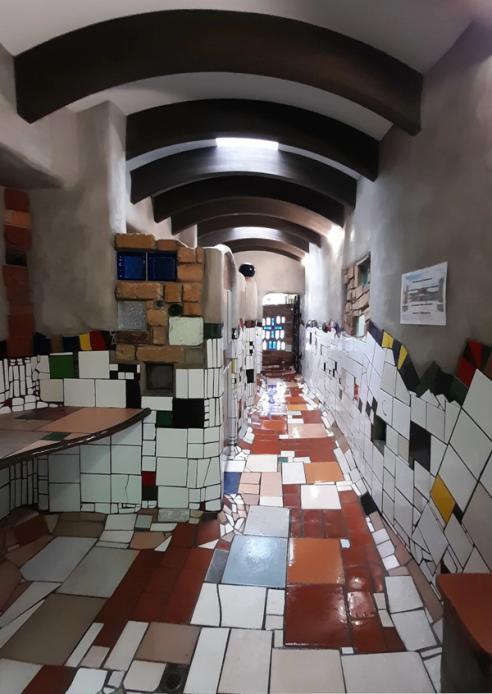Friedensreich Hundertwasser
b. 1928d. 2000
Also known as:
- Friedrich Stowasser
- Friedensreich Regentag Dunkelbunt Hundertwasser
1 Artwork
Best known by his pseudonym Friedensreich (Regentag Dunkelbunt) Hundertwasser, Friedrich Stowasser was born and educated in Austria where he studied at the Vienna Academy of Fine Arts.
He began signing his art as Hundertwasser (which translates the Slavic 'Sto' into German 'Hundert') while still studying. The pseudonym Friedensreich Hundertwasser literally translates to mean "Peace-Realm Hundred-Water" while the other names he chose for himself, Regentag and Dunkelbunt, translate to "Rainy day" and "Darkly multi-coloured".
Already a celebrated artist in Europe, Hundertwasser arrived in New Zealand in the 1970s on his boat, the “Regentag”, having sailed via Panama, the Galapagos and Tahiti. Once in Aotearoa he acquired properties in the north, near Kawakawa. These were added to properties he still owned in Europe including a farm on the edge of Normandy, a former saw mill in Lower Austria’s Waldviertel, and the vast Giardino Eden in Venice (now managed by the Hundertwasser Trust under the instruction that it be ‘left to nature’).
An architect as well as a visual artist, Hundertwasser was very active in the field of environmental protection, campaigned for a nuclear free world and advocated for humane and ecological building.
Opposed to "a straight line" mentality, his best known work is the Hundertwasserhaus in Vienna, which has become a notable place of interest in the Austrian capital. Several projects have been completed post-humously including the 'Hundertwasser toilets' (1999) in Kawakawa and the Whangārei Art Museum (2022).
See also biography on Hundertwasser.com

Friedensreich Hundertwasser, ‘Hundertwasser Public Toilets’ (1999), Kawakawa
Image: Bronwyn Holloway-Smith, Public Art Heritage Aotearoa New Zealand, 2021
- Associated Artworks

